The notes on individual locomotives were originally collated and published by Chuck Collins, and are re-published here with his permission. The introduction, updates and formatting for this blog by Terry Smith. Updated 15-01-2015.
The Sandy River Railroad
The Sandy River Railroad ran the 18 miles from Farmington to Phillips. The railroad was chartered and building started in 1879 and the SR fortuitously managed to acquire the former B&B locomotives, rolling stock and track from the mysterious “Mr Brown of New Hampshire” who had acquired them a year earlier when the B&B line folded in June 1978 and its assets sold. The Sandy River Railroad was originally financed by the towns of Strong, Phillips, Madrid and Rangeley and private investors.
It is believed that some of the original SR backer’s then went onto to separately finance the Franklin & Megantic Railroad. These common owners then became one of the groups that agreed to the “Franklin County Consolidation” in January 1908 which lead to the Sandy River and Rangeley Lakes Railroad company being formed to acquire and operate all the separate lines and companies.
The railroad merged into the Sandy River and Rangeley Lakes Railroad company in January 1908 and ceased to exist as a separate entity, although popular vernacular still refers to the Sandy River for the merged system after 1908.
SR #1
Hinkley #1251 built 1877 as Billerica & Bedford Ariel.
12 ton inside frame 0-4-4RT
30″ diameter 130psi boiler
8″x12″ cylinders
30″ drivers
Rear tank carried 400 gallons water and 1/4 ton coal.
This locomotive served as
Billerica & Bedford #1 Ariel (1878 – 1879) as a strict cab forward Forney design.
Sandy River #1 Dawn (1879 – 1890) rebuilt as a conventional boiler first locomotive.
Rebuilt in 1882 with longer wheelbase, larger cab and water tank.
Sandy River & Rangeley Lakes #1 (1908 – 1912)
This was the first two foot gauge engine built for New England, and was virtually identical to Billerica and Bedford Puck built shortly thereafter. Built to run tank first. Purchased by Sandy River Railroad following dismantling of Billerica and Bedford Railroad. Rebuilt by the Hinkley Works in Boston in April 1879 as Sandy River Dawn #1 running boiler first and using wood fuel. Used as Sandy River Railroad construction engine beginning October 1879. Wrecked on plow train at Sandy River bridge south of Phillips 23 January 1882. Rebuilt March 1882 with longer wheelbase, larger cab, and tank capacity increased to 500 gallons. Became the preferred Sandy River engine following rebuilding. Used for passenger service following delivery of Sandy River #4 in October 1890. Reconverted to coal burning in 1893. Used as a standby engine following purchase of Sandy River 2nd #2 in 1893. Renumbered Sandy River & Rangeley Lakes #1 in 1908 consolidation. Little used following purchase of Sandy River & Rangeley Lakes #9 in 1909. Scrapped September 1912 as Maine Central Railroad modernized subsidiary Sandy River & Rangeley Lakes locomotive fleet.
SR #2 (1st)
Hinkley #1261 built 1877 as Billerica & Bedford Puck.
12 ton inside frame 0-4-4RT
30″ diameter 130psi boiler
8″x12″ cylinders
30″ drivers
Rear tank carried 400 gallons water and 1/4 ton coal.
This locomotive served as
Billerica & Bedford #2 Puck (1878 – 1879) as a strict cab forward Forney design.
Sandy River #2 Echo (1879 – 1890) rebuilt as a conventional boiler first locomotive.
Phillips & Rangeley #2 Bo Peep (1890 – 1893)
Phillips & Rangeley #4 Bo Peep (1893 – 1908)
Sandy River & Rangeley Lakes #4 (1908 – 1912)
This locomotive was a reorder of the Billerica and Bedford Ariel design to be used as a standby engine. Built to run tank first. Purchased by Sandy River Railroad following dismantling of Billerica and Bedford Railroad. Rebuilt by the Hinkley Works in Boston in April 1879 as Sandy River Echo #2 running boiler first and using wood fuel. Used as Sandy River construction engine beginning 25 September 1879. Pulled the first passenger train to Strong 12 November 1879. Sold to Phillips and Rangeley Railroad as P&R #2 Bo Peep in July 1890 and used as Phillips and Rangeley construction engine. Renumbered Phillips & Rangeley #4 and used as a standby engine following purchase of Phillips & Rangeley 2nd #2 in 1893. Used for summer only passenger service between Rangeley and Green Farm upon completion of the Eustis Railroad in 1904. Renumbered Sandy River & Rangeley Lakes #4 in 1908, but little used following discontinuance of Eustis branch passenger service in same year. Scrapped September 1912 as Maine Central Railroad modernized subsidiary Sandy River & Rangeley Lakes locomotive fleet.
SR #2 (2nd)
Baldwin #13733 built 9/1893 as Sandy River 2nd #2.
20 ton outside frame 2-6-0
36″ diameter 140psi boiler
12″x16″ cylinders
33″ drivers
13 ton tender carried 1000 gallons water & 1.5 tons coal.
This locomotive served as
Sandy River #2 (2nd) (1893 – 1905).
Sandy River #7 (1905 – 1908).
Sandy River & Rangeley Lakes #18 (1908 – 1936)
Substantially rebuilt as a Prairie locomotive in 1916.
This was a repeat of the Laurel River & Hot Springs Mogul design. Purchased to handle increasing volumes of lumber being received from Philips & Rangeley and Franklin & Megantic railroads. Used as the preferred Sandy River freight engine until delivery of Sandy River #8 in 1904. Then used as a standby freight engine. Renumbered Sandy River #7 in June 1905. Renumbered Sandy River & Rangeley Lakes #18 in 1908. Rebuilt January 1916 by Maine Central Railroad Waterville shops adding a trailing truck to support a larger boiler, and a proportionally larger tender was provided similar to the original design of Sandy River #8, and identical to the recently completed conversion of Sandy River & Rangeley Lakes #16. Fitted with air brakes and electric headlight in 1919. Subsequently used system wide in freight and mixed service. Wrecked when Kingfield bridge collapsed on 29 May 1922. Burned in 12 February 1923 Phillips engine house fire. Repaired, and received a new tender built by Baldwin Locomotive Works in 1926. Used as a standby engine during receivership. Pulled the Sandy River & Rangeley Lakes scrapping train in 1936. Scrapped at Farmington when dismantling was complete.
SR #3 (1st)
Porter #565 built 4/1883 as Sandy River #3.
Configuration: 14 ton inside frame 0-4-4RT
31″ diameter 130psi boiler
9″x14″ cylinders
38″ drivers
Rear tank carried 550 gallons water & 1 ton wood.
This locomotive served as Sandy River #3 (1883 – 1894).
Wiscasset & Quebec #1 (1894 – 1901).
Wiscasset Waterville & Farmington Railroad #1 (1901 – 1906).
Wiscasset Waterville & Farmington Railway #1 (1906 – 1916).
This was the least successful 2 foot gauge engine design to operate in Maine. Its frame was long and rigid in comparison to the contemporary Hinkley pattern later used by Portland, and 38 inch drivers raised the center of gravity. Derailed easily and was especially troublesome on newly laid track. Used as a standby engine for the Sandy River, Franklin & Megantic, and Phillips & Rangeley railroads. Rebuilt to burn coal when sold to Wiscasset & Quebec Railroad as W&Q #1. Used as Wiscasset & Quebec construction engine beginning in September 1894. Used as standby engine following delivery of W&Q #2 and #3 from Portland in November 1894. Little used following discontinuance of service on Winslow branch in 1912. Scrapped in 1916 and boiler used as a culvert in Whitefield.
SR #3 (2nd)
Baldwin #12964 built 10/1892 as Laurel River & Hot Springs James Wyman.
20 ton outside frame 2-6-0
38″ diameter 140psi boiler
12″x16″ cylinders
33″ drivers
13 ton tender carried 700 gallons water & 1 ton coal.
This locomotive served as
Laurel River & Hot Springs James Wyman (1892)
Sandy River #3 (2nd) (1900 – 1905).
Sandy River #6 (1905 – 1908).
Sandy River & Rangeley Lakes #16 (1908 – 1936)
Substantially rebuilt as a Prairie locomotive in 1915.
This improved Mogul design was based on observation of Phillips & Rangeley #3. The North Carolina lumber operation for which it was built failed within a few months, and the engine was brought to Wiscasset on 20 January 1897. The engine was put in storage in Portland when the Wiscasset & Quebec Railroad was unable to pay for it. Built with air brakes and became the first Maine 2 foot gauge engine so equipped. Delivered to the Sandy River railroad in February 1900. Renumbered Sandy River 2nd #3 and became the preferred freight engine on Sandy River subsidiary Franklin & Megantic Railroad. Overturned in switching test by Orris Vose at Salem Summit on 29 October 1900. Derailed on a plow train at Salem Flat on 8 February 1901. Renumbered Sandy River #6 in June 1905. Renumbered Sandy River & Rangeley Lakes #16 in 1908. Rebuilt October 1915 by Maine Central Railroad Waterville shops adding a trailing truck to support a larger boiler, and a proportionally larger tender was provided similar to the original design of Sandy River #8. Subsequently used system wide in freight and mixed service. Fitted with electric headlight in 1919. Burned in 12 February 1923 Phillips engine house fire. After completion of repairs rolled over during low speed collision with Sandy River & Rangeley Lakes #23 at Phillips in 1924. Unused after 1932. Scrapped during dismantling of Sandy River & Rangeley Lakes Railroad in 1935.
SR #4
Portland #616 built 10/1890 as Sandy River #4.
18 ton inside frame 0-4-4RT 3
34″ diameter 140psi boiler
10.5″x14″ cylinders
33″ drivers
Rear tank carried 600 gallons water & 3/4 ton coal.
This locomotive served as
Sandy River #4 (1890 – 1908).
Sandy River & Rangeley Lakes #5 (1908 – 1919).
This engine was built in a joint order with Phillips and Rangeley #1. The two engines reflected Portland Company’s initial modification of the Hinkley design. This engine was ordered to replace Sandy River #2 when that engine was sold to the Phillips and Rangeley. Used as the Sandy River freight engine until Sandy River #5 was delivered in May 1891. Then assigned to passenger service including the Rangeley Express. Burned in Phillips 19 June 1897 engine house fire. Derailed by ice and overturned on a Phillips & Rangeley plow train between Dallas and Dead River Station on 21 January 1903 with Dana Aldrich as engineer. Derailed by excessive speed and rolled over with the southbound Rangeley Express north of Strong on 8 September 1906. Used as a standby passenger engine following delivery of Sandy River #16 in 1907. Renumbered Sandy River & Rangeley Lakes #5 in 1908 consolidation. Derailed and rolled over with passenger train near Carrabasset 26 October 1913. Little used following purchase of Sandy River & Rangeley Lakes #10 in 1916. Scrapped when Sandy River & Rangeley Lakes #24 was delivered in 1919.
SR #5
Portland #622 built 5/1891 as Sandy River #5 N. B. Beal.
18 ton inside frame 0-4-4RT
34″ diameter 140psi boiler
10.5″x14″ cylinders
33″ drivers
Rear tank carried 600 gallons water & 3/4 ton coal.
This locomotive served as
Sandy River #5 (1890 – 1908).
Sandy River & Rangeley Lakes #6 (1908 – 1925).
Kennebec Central as KC #4 (1908 – 1925).
Wiscasset, Waterville & Farmington #9 (1908 – 1925).
Currently at the WW&F Museum.
This engine was a repeat order for the design of Sandy River #4. Purchased to handle lumber traffic being produced by mills on the newly completed Phillips and Rangeley Railroad. Used as the Sandy River freight engine until Sandy River 2nd #2 was delivered in September 1893. Overturned at Strong in December 1892, and repaired with a new cab January 1893. Burned in Phillips 19 June 1897 engine house fire. Engineer Will Barker was killed when this engine was hit and overturned by a standard gauge engine at the Farmington diamond on 20 December 1897. Used as the Franklin & Megantic freight engine from completion of repairs in February 1898 until the former Laurel River & Hot Springs mogul was purchased in February, 1900. Then used as the Franklin and Megantic passenger engine. Renumbered Sandy River & Rangeley Lakes #6 in 1908. Overturned with passenger train south of Salem Summit 23 January 1917. Electric headlight installed 13 December 1921. Sold to the Kennebec Central as KC #4 in 1925 and used as their standby engine until discontinuance of service in 1929. Purchased by Frank Winter and moved to Wiscasset in 1932. Renumbered Wiscasset, Waterville & Farmington #9 and used as the standby engine until discontinuance of service on the Wiscasset, Waterville and Farmington in 1933. Purchased by a railfan and moved to Connecticut in 1937.
SR #6
The second #3 was re-numbered as Sandy River #6 (1905 -1908)
See entry for the second #3 above for more details.
SR #7
The second #2 was re-numbered as Sandy River #7 (1905 -1908)
See entry for the second #2 above for more details.
SR #8
Baldwin #23874 built 3/1904 as Sandy River #8.
25 ton outside frame 2-6-2
40″ diameter 180psi boiler
12″x16″ cylinders
33″ drivers
19 ton tender carried 1500 gallons water & 2 tons coal.
This locomotive served as
Sandy River #8 (1904 – 1908).
Sandy River & Rangeley Lakes #19 (1908 – 1935).
This engine was the first Prairie type on the Maine two foot gauge railroads. A larger boiler was supported by adding a trailing truck to the frame designed for the Laurel River & Hot Springs Mogul, and a proportionally larger tender was provided. Purchased to handle lumber traffic produced by new sawmills at Madrid and Bigelow. Used as the preferred freight engine on the Phillips to Farmington main line until Sandy River & Rangeley Lakes #23 delivered in 1913. Then used system wide. Wrecked north of Strong on 22 March 1907. Renumbered Sandy River & Rangeley Lakes #19 in 1908. Fitted with air brakes and electric headlight in 1919. Burned in 12 February 1923 Phillips enginehouse fire. Repaired, but unused after 1932. Scrapped in 1935.
SR #16
Baldwin #31826 built 9/1907 as Sandy River #16.
Configuration:
28 ton inside frame 2-4-4RT
41″ diameter 180psi boiler
11.5″x14″ cylinders
35″ drivers
Rear tank carried 800 gallons water & 1.5 tons coal.
This locomotive served as
Sandy River #16 (1907 – 1908).
Sandy River & Rangeley Lakes #8 (1908 – 1935).
This was one of a pair of engines built to Bridgton master mechanic Mel Caswell’s specification for inside frames. The other was Bridgton and Saco River #6. These were the largest Maine 2 foot gauge engines built with inside frames, and the only inside frame engines Baldwin built for the Maine 2 foot gauge railroads. Sandy River’s next order to Baldwin, after a year of experience with this engine, was for an identical engine with outside frames. Purchased to replace the Portland Forneys with more power for the Rangeley Express. Renumbered Sandy River & Rangeley Lakes #8 in 1908. Engineer Frank Hodgman was killed when this engine left the rails and tipped over at Fairbanks while pulling the 11 August 1917 Rangeley Express northbound. Used as a standby engine for low speed work following that wreck. Fitted with air brakes and electric headlight in 1919. Burned in the 12 February 1923 Phillips engine house fire. Not repaired and scrapped when the railroad was dismantled in 1935.








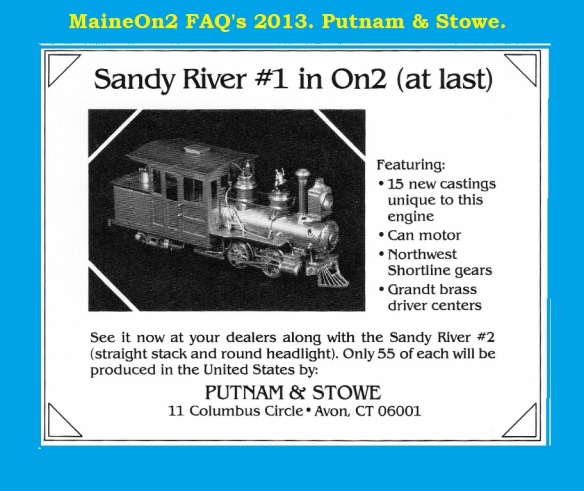


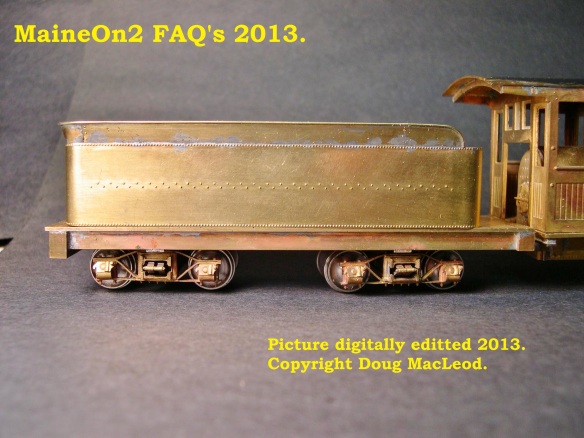
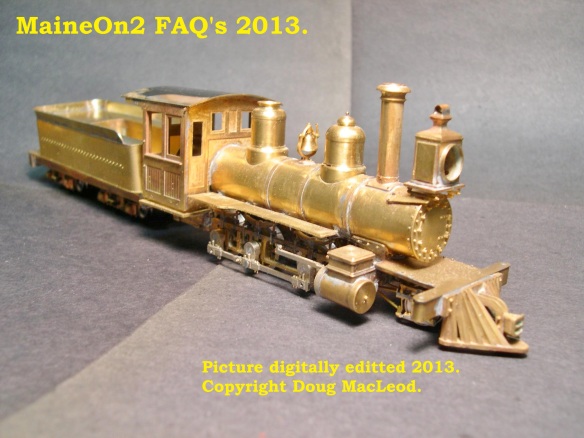
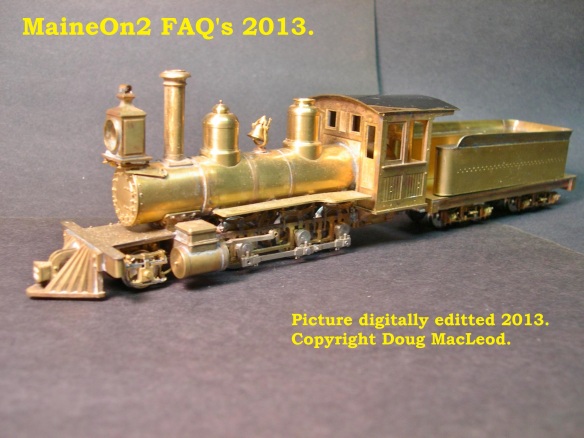
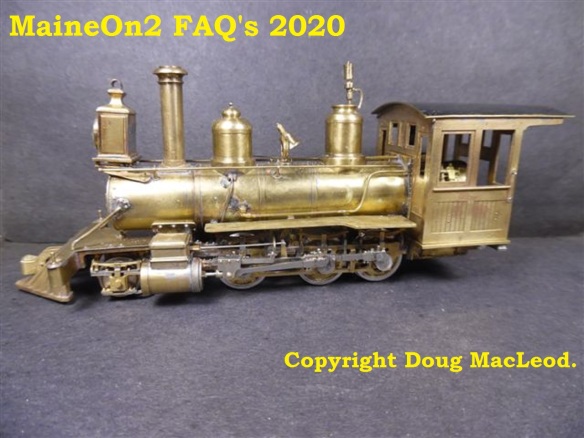
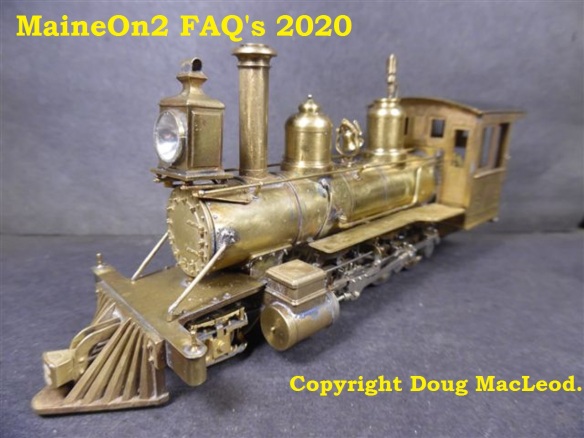
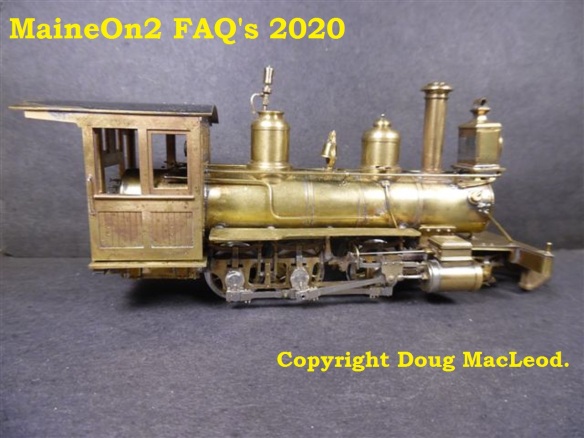
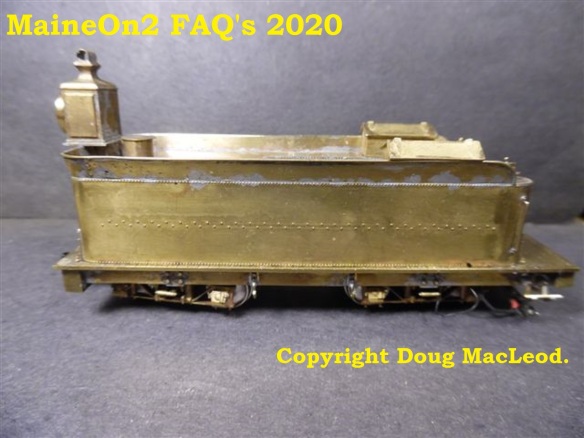
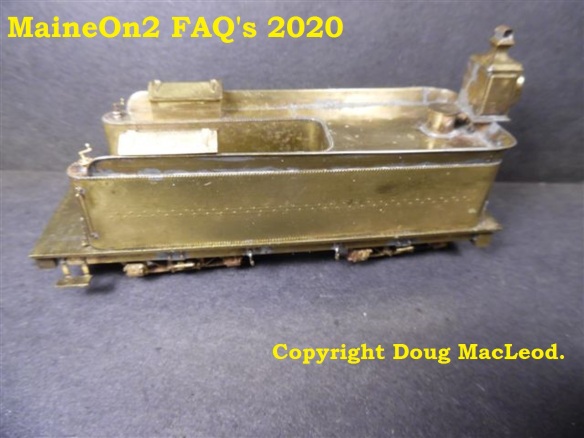
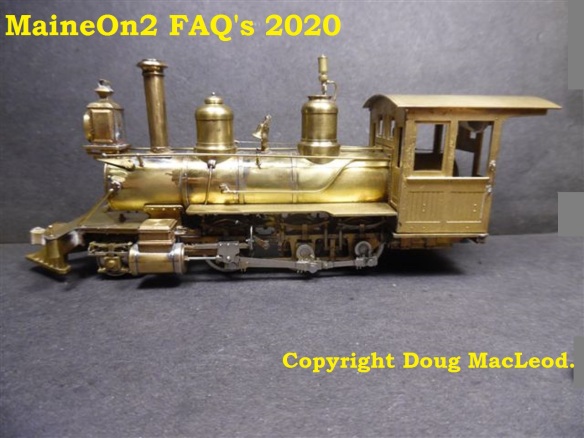
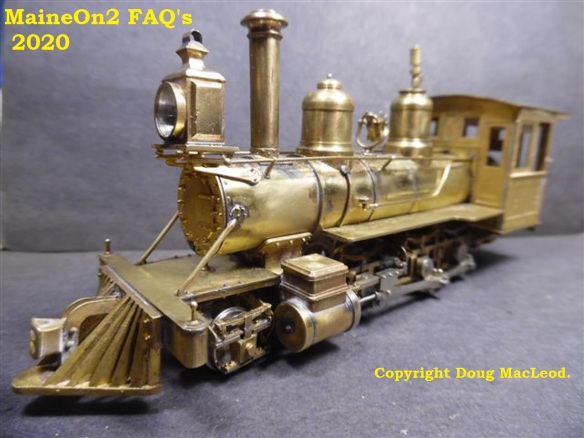
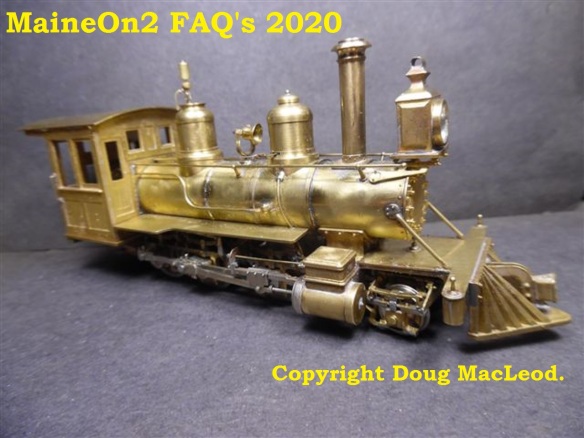
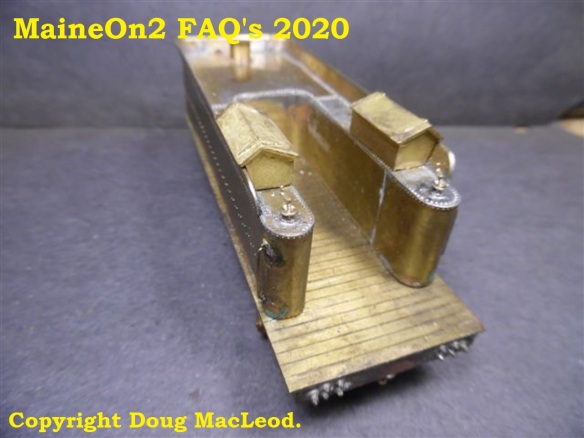
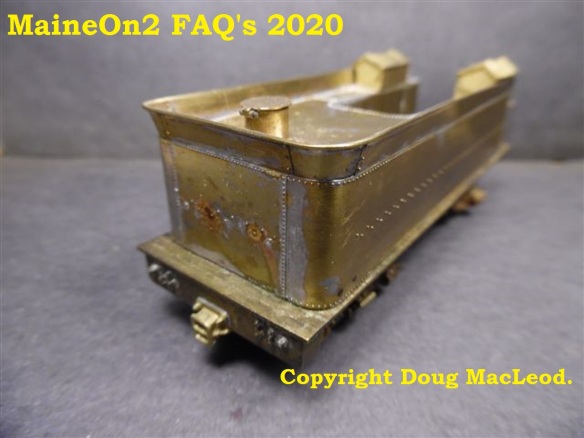
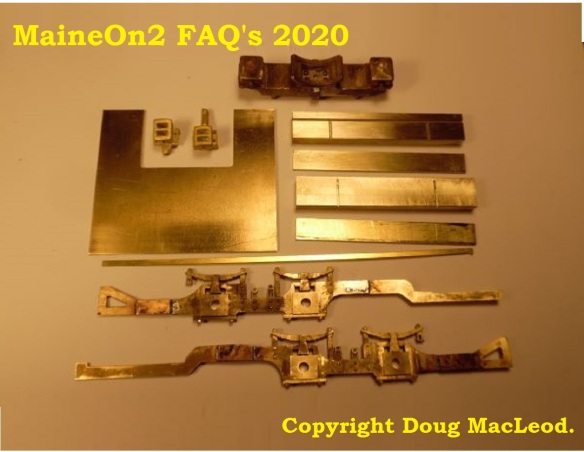
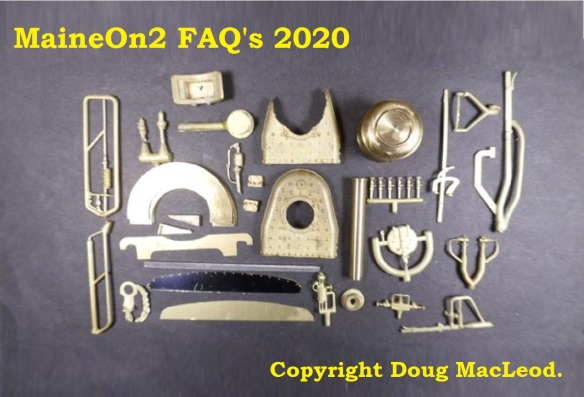
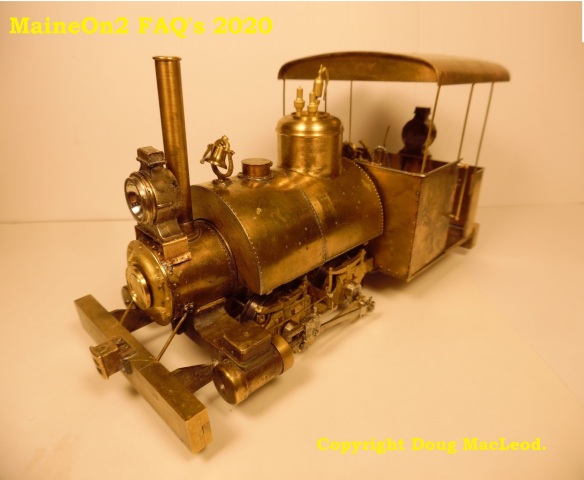
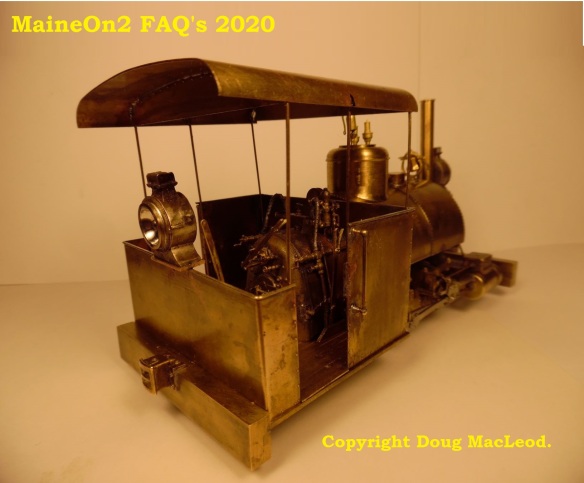
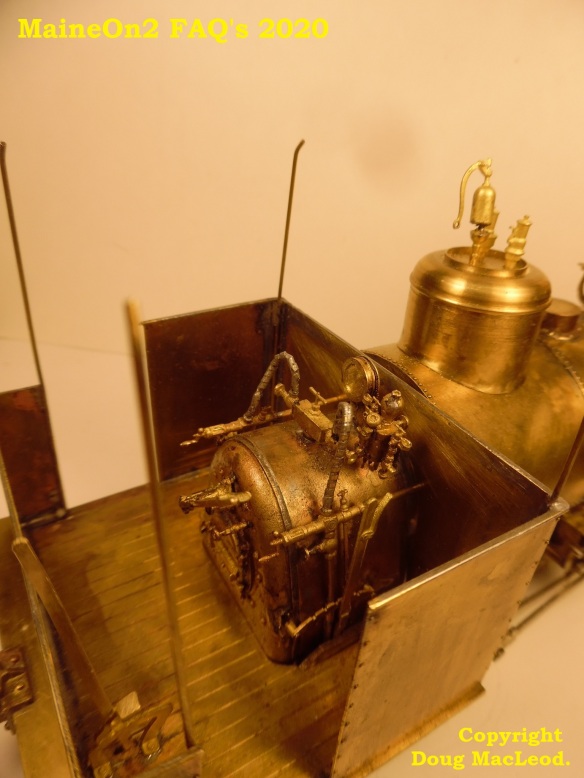
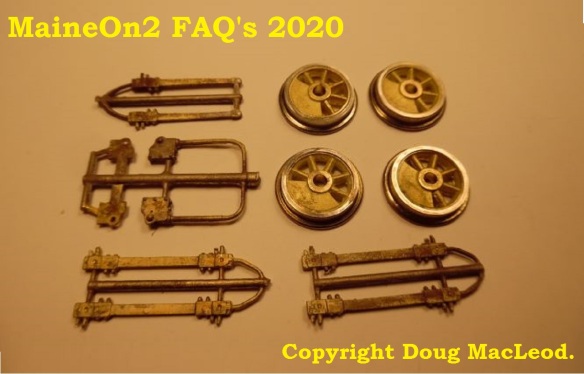
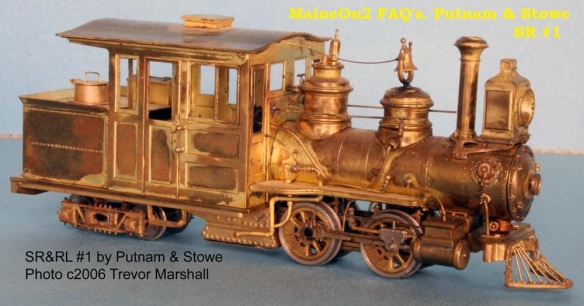




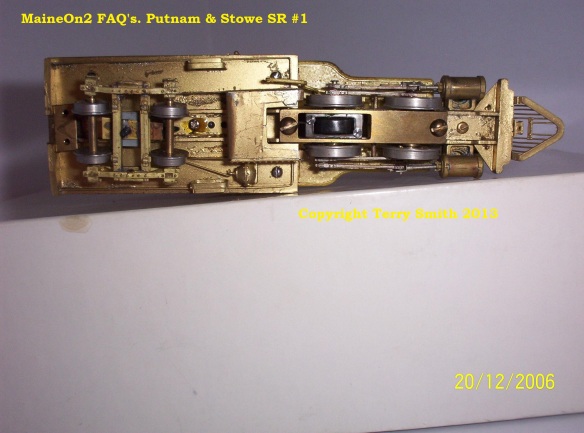


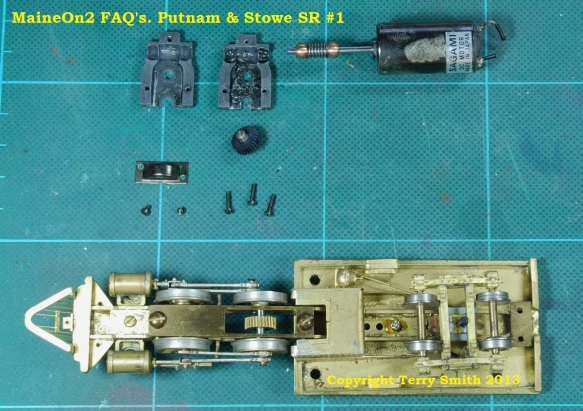


You must be logged in to post a comment.